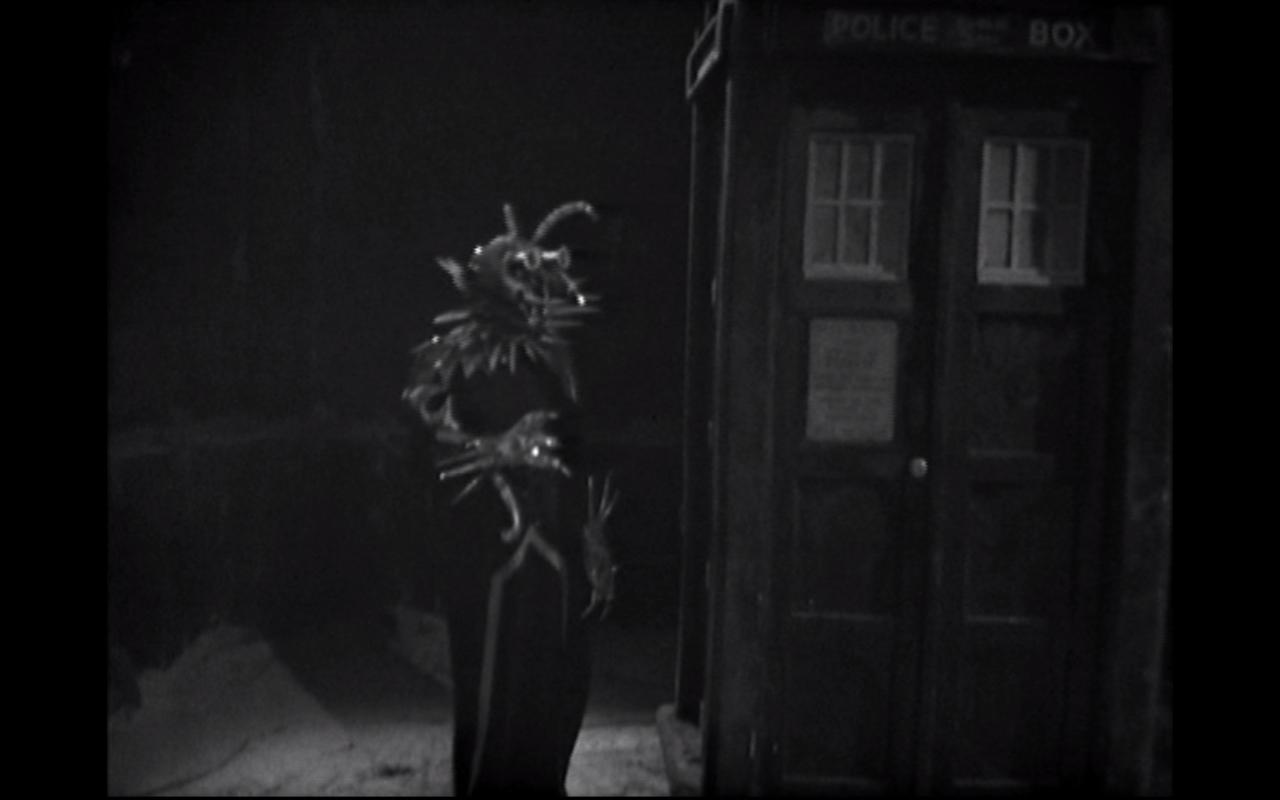"Oh, my eyes are so sore," Barbara complains at the beginning of "Crater of Needles", and we know what she means. The smearing effect is really starting to wear out its welcome.
 |
| The Doctor and Vicki plot in the control room of the Carcinome. ("Crater of Needles") ©BBC |
It looks like things are finally improving in "Invasion" (potentially confusing episode title #412), with some actual incident. The Doctor and Vicki manage to escape the Carcinome with the help of a controlled Zarbi nicknamed Zombo -- Vicki's habit of giving things cute nicknames really developing here (unless you count Sandy the Sandbeast in "Desperate Measures"), and they meet up with Barbara and the remnants of the Menoptra invasion force, who are planning to launch an assault on the Animus. Meanwhile, Ian and Vrestin convince the Optera to also attack the Animus from below (or, as the Optera call it, Pwodarauk), which leads to some deservedly oft-praised dialogue conveying alien thought patterns: "A silent wall. We must make mouths in it with our weapons. Then it will speak more light." Of course, this is followed three minutes later by the Optera Nemini sacrificing herself to stop a flow of acid into the cavern by jamming her head into the hole, which really is an astonishing sight to behold. Ian looks like he has no idea what to make of it. But as the Doctor and Vicki head back to the Carcinome to try and destroy the Animus while Barbara and the Menoptra distract the Zarbi with a frontal attack, it at last feels like the plot is ready to advance.
(Oh, and finally a special note for the stagehand clearly visible through a doorway in the Carcinome in this episode: Richard Martin's reputation as a slapdash director really starts with this serial, doesn't it?)
12 Doubly confusing this time around, as not only is there a Troughton story called The Invasion, but part one of Invasion of the Dinosaurs is just called Invasion -- presumably to preserve the surprise appearance of the dinosaurs that had already been widely promoted.


























